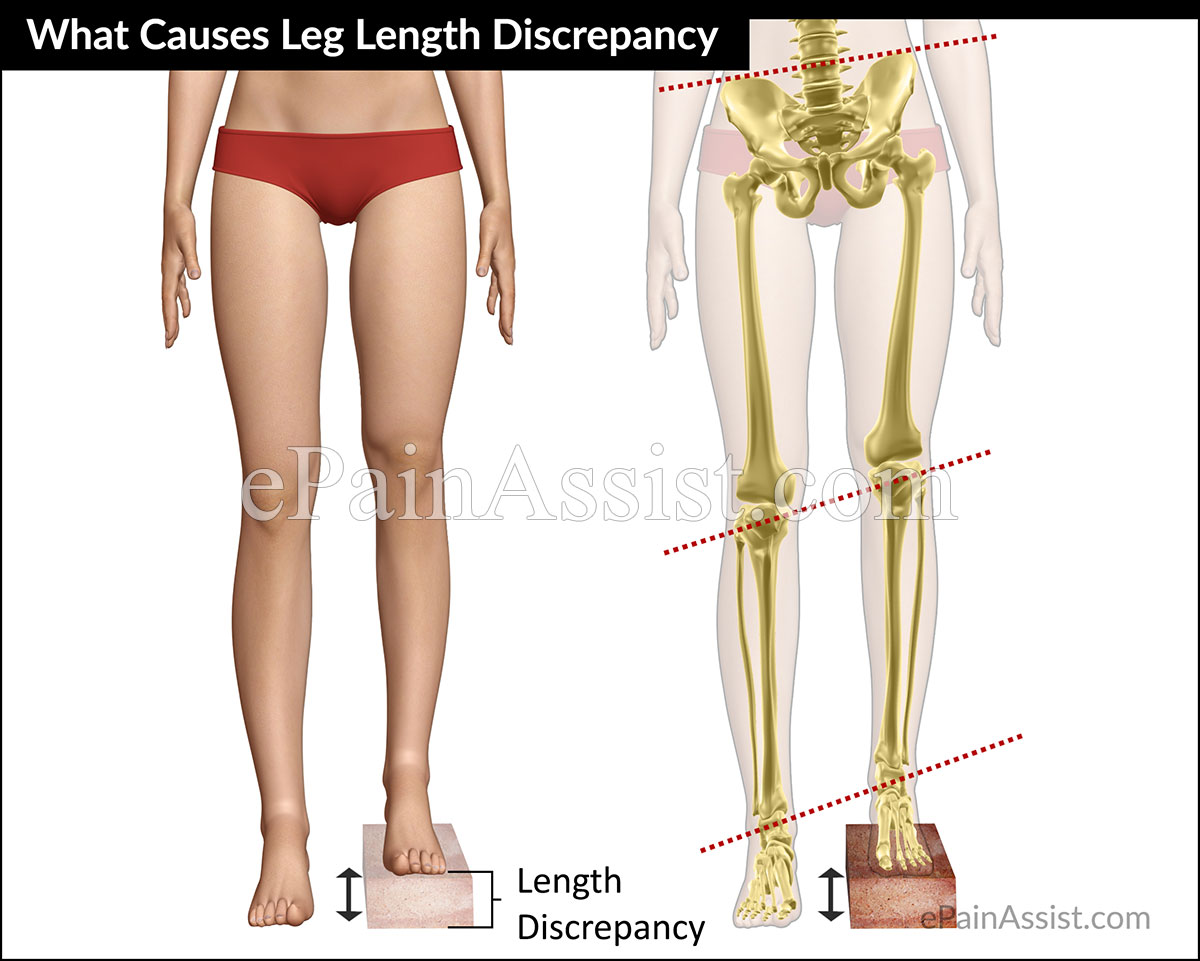What Causes Leg Length Discrepancy (LLD)?
Generally, leg length discrepancy (LLD) usually starts in developmental stages of a child whether at birth, infancy or adolescence. In some situations, the causes may not be identifiable but can be identified in other cases. The causes of leg length discrepancy (LLD) have been identified by various factors, which may be congenital, developmental, or posttraumatic.

- Congenital disorder can cause leg length discrepancy (LLD). This is when it starts from birth. In this case, leg length discrepancy (LLD) is hereditary.
- Injury or diseases causing leg length discrepancy (LLD) is when it is as a result of injury or diseases that affect growth such as ollier disease, multiple hereditary exostoses or neurofibromatosis. The injured part may not heal properly, affecting the ability of that part to grow on the same pace as the unaffected leg. For instance, if the joints become infected, growth of the leg may be hindered.
- Fractures can cause leg length discrepancy (LLD). Posttraumatic is a fracture of the legs, which causes the legs to be shortened or overgrown as it heals. If there is a fracture in the growth plate, this can shorten the growth of the leg and when the leg heals extremely well, the leg may become overgrown.
Other problems affecting the nerves and the muscles which can cause leg length discrepancy (LLD) are polio and cerebral palsy.
What are the Signs and Symptoms of Leg Length Discrepancy (LLD)?
There are multiple signs and symptoms for leg length discrepancy (LLD). Some are obvious and some are subtle. There are differences between individuals on the extent and causes of leg length discrepancy (LLD). The difference in length between the two legs may vary from 3 and a half to 4 percent. These differences often determine the impact that may be experienced by different individuals. Signs and symptoms usually experienced in the patients with leg length discrepancy (LLD) include:
- If the difference in leg length discrepancy (LLD) is 3 cms and higher, difference will be easily noticed as the person walks.
- The person affected with leg length discrepancy (LLD) will need to exert more energy to walk.
- Some people may experience some pain in the lower back, ankle, or hip as they walk. Some studies have collaborated this, while other have refuted this.
- The person’s posture will be highly affected, causing him/ her to hold the longer leg on the knee for support.
- The person’s gait will be adversely affected, which will be obviously noticed.
Risk Factors for Leg Length Discrepancy (LLD)
The risk factors for leg length discrepancy (LLD) include:
Patients might have serious dissimilarities in the length of the legs as an effect brought by Leg Length Discrepancy (LLD) due to:
- Infection.
- Birth defects.
- Injuries.
- Accidents and other causes.
Complications in Leg Length Discrepancy (LLD)
Leg length discrepancy (LLD) with very high difference can become complicated and lead to severe orthopaedic conditions like lower back pain, scoliosis, or arthritis, if left untreated.
- The patient may experience complications due to contractures of the muscles while having to constantly stand on their toes of the shorter leg for support.
- Another complication is that the shorter side of their body is often lowered down and suddenly lifted by the longer side, causing them to have abnormal gait that goes up and down.
- The abnormal gait can cause the child to be highly disturbed psychologically.
- The patient is often ridiculed and teased by other children, hindering the child’s social life.
- Most patients with leg length discrepancy (LLD) have to constantly support the shorter leg on the knee while standing, causing them to bend often or they may have to stand on their toes.
Tests to Diagnose Leg Length Discrepancy (LLD)
Physical examination/ test and X-ray may be used by a physician to test the leg length discrepancy (LLD). The cause of leg length discrepancy (LLD) may determine when the diagnosis will be done. Hemiatrophy and hemiphypertrophy are usually diagnosed at infancy by a pediatrician. For younger children, parents may notice inequality of the body structure of their child. Once this is noticed, parents should immediately consult a physician for tests.
If leg length discrepancy (LLD) is caused by hemihypertophy, abdominal ultrasound should be administered to the child’s kidney in order to ensure that there is no presence of tumors. If this is present, it can cause the leg on that side to develop hypertrophy.
A physical examination/test will be carried out to measure the legs and find out the extent of difference between the two legs. Afterwards, the child will be subjected to a series of surgical observations of the lower legs, lower back, hips and thighs, by observing the way and manner the child walks and performs some task using X-rays, MRI and CT scan to find out if indeed the child has leg length discrepancy (LLD) and to ascertain the cause of the leg length discrepancy (LLD).
A growth chart will be obtained from these examinations/ tests and used to compare the child’s skeletal age to the leg length. This growth chart will also serve as a guide to know the progress made so far on treatment for leg length discrepancy (LLD).
- Cleveland Clinic. (2021). Leg Length Discrepancy https://my.clevelandclinic.org/health/diseases/17840-leg-length-discrepancy
- OrthoInfo. (2021). Limb Length Discrepancy https://orthoinfo.aaos.org/en/diseases–conditions/limb-length-discrepancy/
Also Read:
- Problems Caused By One Leg Shorter Than Other
- What is Leg Length Discrepancy and How is it Measured?
- Leg Length Discrepancy (LLD) Treatment, Orthotics, Surgery, Coping, Recovery Period
- Can Leg Length Discrepancy Cause Scoliosis?
- Problems Caused By One Leg Shorter Than Other
- Finding the Perfect Shoes for Leg Length Discrepancy : Improve Balance and Alignment
